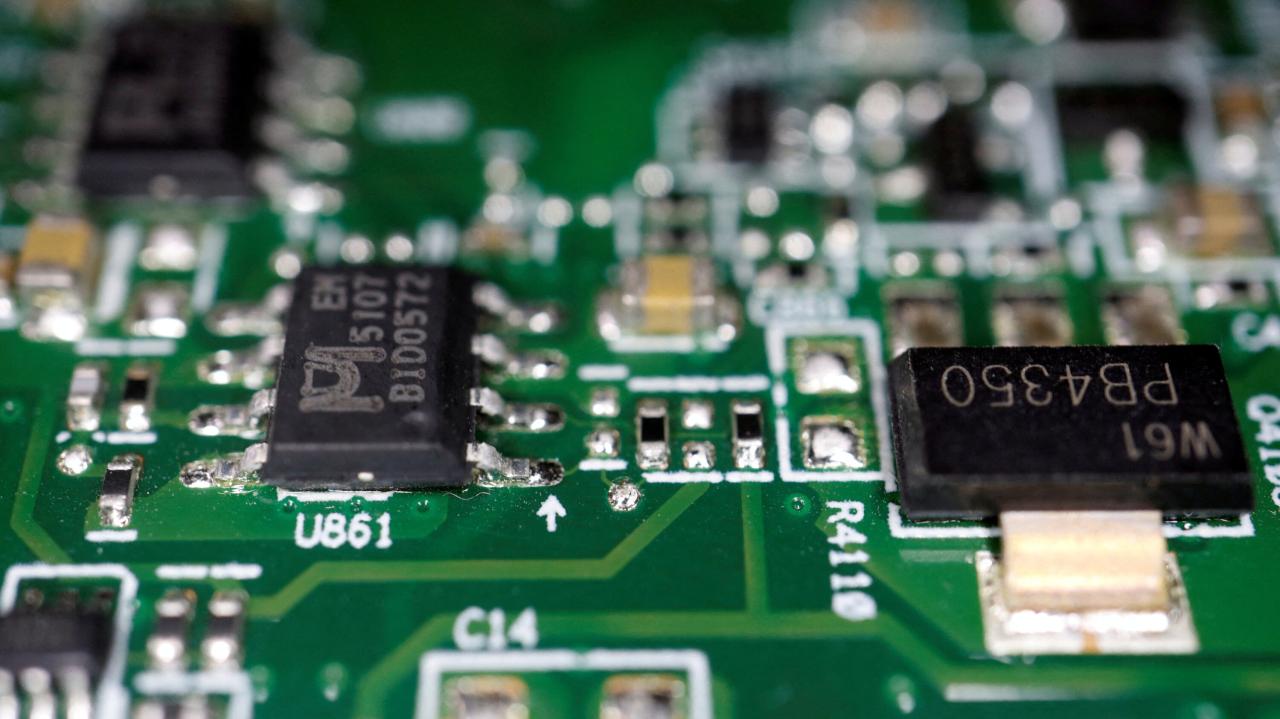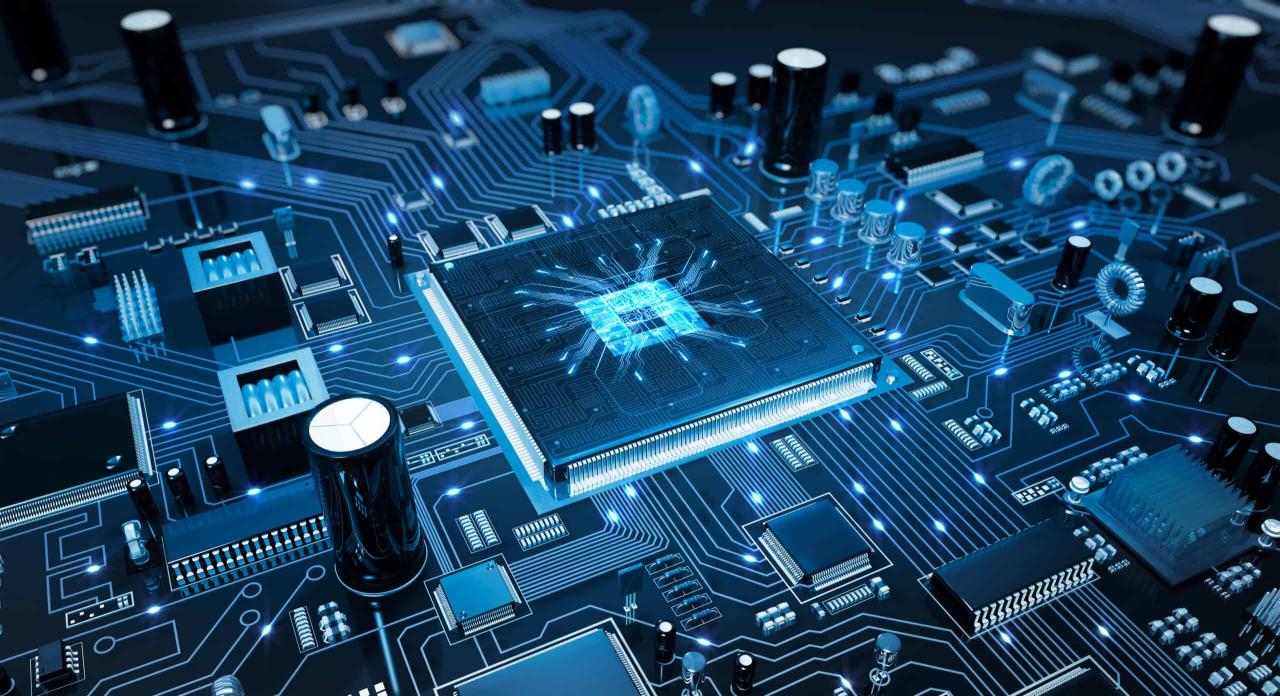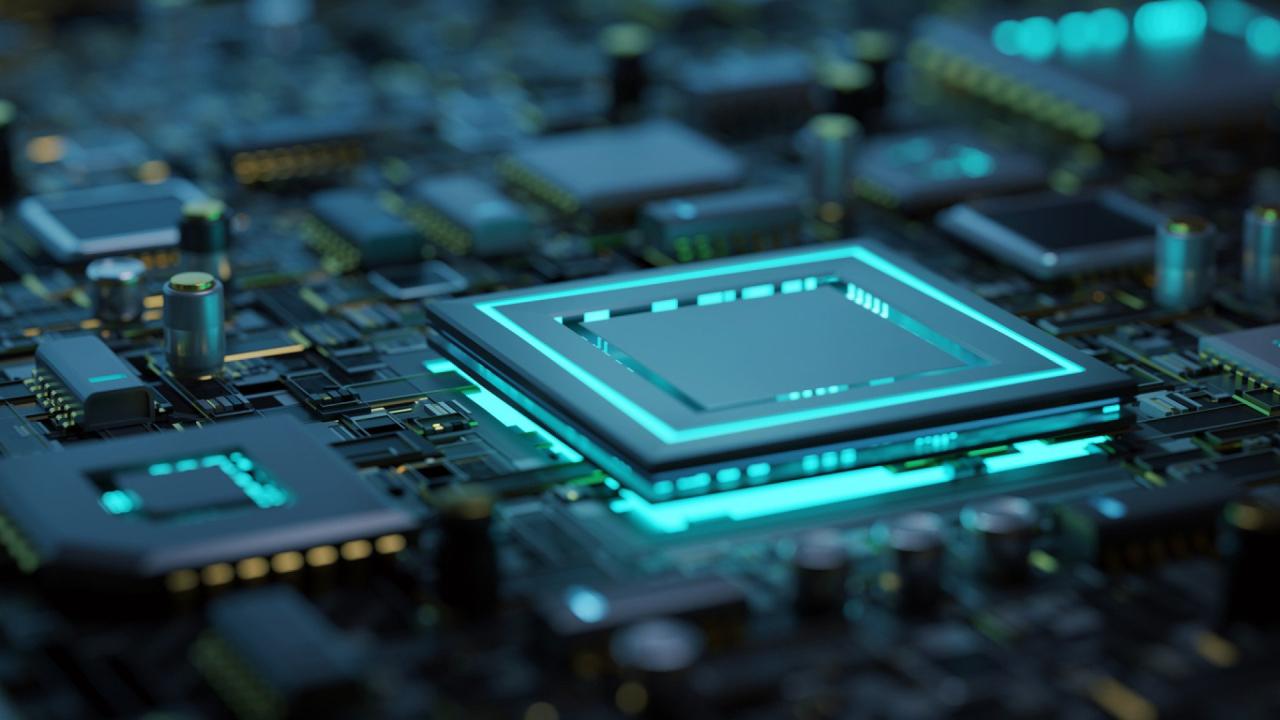Chip iPhone stands as a testament to Apple’s relentless pursuit of excellence in mobile technology, embodying a journey that redefines performance and efficiency. From humble beginnings, Apple’s chip technology has evolved dramatically, spearheading innovations that not only enhance user experience but also set industry standards. Each iteration showcases advancements that push the boundaries of what smartphones can achieve, incorporating cutting-edge features and unparalleled performance.
As we explore the intricacies of iPhone chip technology, we will uncover how these powerful components have bolstered battery life, supported advanced AI capabilities, and fortified security measures, ultimately shaping the future of mobile devices. Join us as we delve into the compelling advancements and future possibilities that make chip iPhone a pivotal element in the smartphone ecosystem.
Overview of iPhone Chip Technology

Over the years, Apple’s iPhone chip technology has undergone remarkable transformations, allowing for enhanced performance, efficiency, and capabilities. From the initial introduction of the A4 chip in 2010 to the latest A16 Bionic chip, the evolution of this technology reflects Apple’s commitment to innovation and user experience.
The journey of iPhone chip technology began with the A4 chip, which powered the iPhone 4. It was a significant leap, being the first to integrate both the CPU and GPU on a single chip, which laid the groundwork for future advancements. Each subsequent generation of chips introduced improvements in processing power, energy efficiency, and graphics capabilities. For instance, the A11 Bionic chip featured a neural engine that enabled machine learning tasks, while the A14 Bionic brought a 5-nanometer process technology that improved performance and power efficiency. The latest A16 Bionic chip continues this trend, boasting advanced features such as enhanced graphics processing, faster machine learning capabilities, and improved battery management.
Significance of Chip Architecture in iPhone Performance
The architecture of Apple’s chips plays a crucial role in maximizing iPhone performance. The custom designs allow for seamless integration between hardware and software, resulting in optimized performance tailored for specific tasks. This architecture supports higher clock speeds, increased core counts, and advanced cache systems, all contributing to a smoother user experience.
One of the key advantages of Apple’s custom chip architecture is its ability to handle complex tasks efficiently. Some significant aspects include:
- Unified Memory Architecture: This allows the CPU and GPU to share memory, leading to faster data access and improved performance in graphics-intensive applications.
- Energy Efficiency: Apple’s chips are designed to balance performance with power consumption, ensuring longer battery life while delivering high-speed processing.
- Neural Engine: With dedicated cores for machine learning, Apple’s chips can perform tasks like image recognition and natural language processing much more efficiently than standard processors.
Key Features of Apple’s Custom Chips Compared to Competitors
Apple’s custom chips stand out in the competitive smartphone market due to several unique features that enhance their performance beyond that of competitors. These features include:
- Performance per Watt: Apple’s chips consistently demonstrate superior performance while consuming less power, which is essential for mobile devices.
- Integrated Secure Enclave: This enhances security by providing a dedicated area for sensitive data processing, ensuring user information is protected.
- Optimized Software Compatibility: Apple’s control over both hardware and software results in a seamless ecosystem, leading to superior performance in applications specifically designed for iOS.
Each of these features underscores the strategic advantage Apple holds over its competitors, reinforcing its position as a leader in mobile technology innovation.
Impact of Chip Design on iPhone Performance

The design of chips within iPhones plays a crucial role in determining not only the performance of the device but also its efficiency and longevity. As Apple continues to innovate with each iteration of its processors, the impact of these designs becomes more pronounced, influencing everything from battery life to advanced computational capabilities. Enhanced chip architecture allows iPhones to achieve higher performance metrics while consuming less energy, which is vital in today’s fast-paced, tech-driven environment.
Battery Life and Overall Efficiency, Chip iphone
The interplay between chip design and battery life is a pivotal aspect of iPhone functionality. Efficient chip designs, such as Apple’s A-series processors, utilize advanced manufacturing processes that optimize power consumption. For instance, the 5-nanometer process used in the A14 Bionic chip enables more transistors to fit into a smaller space, leading to reduced energy use while maintaining high performance levels.
Several performance benchmarks illustrate this efficiency. For example, the A14 Bionic chip, introduced in the iPhone 12, boasts a 40% improvement in performance and a 30% increase in efficiency compared to its predecessor, the A13 chip. This means that everyday tasks like gaming, video streaming, and multitasking can be performed with less strain on the battery, contributing to longer usage times.
Moreover, the iPhone 13, powered by the A15 Bionic chip, further enhances battery performance by integrating a more efficient GPU and CPU design. The A15 achieves up to 2.5 hours more battery life compared to the iPhone 12, showcasing how innovative chip design translates directly into real-world benefits for users.
Performance Benchmarks Across iPhone Models
Understanding the performance benchmarks across different iPhone models highlights the advancements made in chip design. Each successive generation of chips has resulted in notable improvements in processing power and energy efficiency:
– A11 Bionic (iPhone 8, iPhone X)
– Single-core score: 4,000+
– Multi-core score: 9,000+
– A12 Bionic (iPhone XS, iPhone XR)
– Single-core score: 4,800+
– Multi-core score: 11,400+
– A13 Bionic (iPhone 11)
– Single-core score: 5,000+
– Multi-core score: 13,000+
– A14 Bionic (iPhone 12)
– Single-core score: 5,900+
– Multi-core score: 15,000+
– A15 Bionic (iPhone 13)
– Single-core score: 6,300+
– Multi-core score: 17,000+
These benchmarks emphasize the continuous evolution of performance capabilities, showcasing how chip design directly affects user experience and device functionality.
Enabling Advanced Features with Chip Architecture
Apple’s chip design also plays a pivotal role in enabling advanced features such as artificial intelligence (AI) and machine learning (ML). The Neural Engine, a dedicated component within the A-series chips, is specifically designed to handle machine learning tasks efficiently. This architectural innovation allows for real-time processing of complex algorithms, enhancing features like Face ID, camera enhancements, and personalized Siri interactions.
For instance, the A15 Bionic chip includes a 16-core Neural Engine capable of performing up to 15.8 trillion operations per second, significantly improving tasks such as image recognition, language processing, and augmented reality experiences. This capability not only enhances the device’s functionality but also contributes to a seamless user experience, making advanced technologies more accessible to everyday users.
Additionally, the energy efficiency of these chips ensures that even while performing intensive tasks, the iPhone remains responsive without compromising battery life, exemplifying the successful integration of performance and functionality through innovative chip design.
Future of Chip Development in iPhones
The future of chip development in iPhones is poised for exciting transformations, driven by advancements in semiconductor technology, AI integration, and energy efficiency. As Apple continues to innovate, future iPhone releases are expected to showcase chips that not only enhance performance but also redefine user capabilities and experiences on mobile devices.
Predictions suggest that the next generation of iPhone chips will focus heavily on artificial intelligence (AI) and machine learning (ML), which will fundamentally alter how users interact with their devices. Enhanced processing capabilities will enable more advanced features such as real-time image processing, improved voice recognition, and context-aware functionalities. Additionally, we can anticipate developments in chip architecture that prioritize power efficiency yet deliver superior performance.
Anticipated Advancements in Chip Technology
Understanding the roadmap for chip technology advancements over the next five years is crucial for predicting how these innovations will affect end users. The following key areas are expected to see significant growth and innovation:
- Integration of 5G Technology: Future chips will further optimize 5G capabilities, ensuring faster download speeds and improved connectivity, allowing users to experience seamless streaming and gaming.
- Improved Energy Efficiency: Innovations in chip manufacturing processes, such as the transition to 3nm or even 2nm fabrication technologies, will yield chips that consume less power while delivering higher performance, extending battery life significantly.
- Advanced AI Capabilities: Upcoming chips will likely feature dedicated AI processors, allowing for faster and more efficient processing of machine learning tasks. This can enhance functionalities like photo editing, personalized recommendations, and advanced Siri interactions.
- Enhanced Graphics Processing: With the growing demand for mobile gaming and high-definition multimedia content, future iPhone chips are expected to incorporate powerful graphics processing units (GPUs) that provide a console-like gaming experience on mobile devices.
- Security Enhancements: The incorporation of secure enclave technology into future chips will further protect user data and privacy, employing advanced cryptography and secure boot processes to prevent unauthorized access.
The evolution of chip technology in iPhones is not merely about increasing speed; it encompasses a holistic approach towards user experience, security, and sustainability. By integrating cutting-edge technologies and prioritizing energy efficiency, Apple aims to create devices that not only meet current consumer demands but also anticipate future needs.
Security Implications of iPhone Chips

The security of mobile devices has become paramount in today’s digital landscape, and the architecture of iPhone chips plays a significant role in ensuring robust protection for user data. Apple’s commitment to security is embedded within its chip design, providing layers of defense against a range of threats. By integrating security features directly into the hardware, Apple has established a multi-faceted approach to safeguard personal information, making the iPhone one of the most secure smartphones available.
Chip architecture directly contributes to the security features of the iPhone through a combination of hardware-based encryption, secure boot processes, and dedicated processing units for sensitive tasks. The Secure Enclave, a coprocessor found in iPhone chips, is designed to handle sensitive data such as fingerprint and facial recognition information. This separation of data from the main operating system prevents unauthorized access and enhances overall security.
Measures Taken by Apple to Safeguard Data Through Chip Technology
Apple implements several advanced measures in its chip technology to protect user data. These measures are crucial in establishing a secure environment where user information is less susceptible to breaches and unauthorized access.
– Encryption: Apple employs end-to-end encryption in its hardware to protect data at rest and in transit. This ensures that sensitive data remains confidential and accessible only to authorized users.
– Secure Boot: This process verifies that the iOS operating system has not been tampered with during startup. It ensures that only trusted software runs on the device, which is critical in preventing malware attacks.
– Face ID and Touch ID: With the integration of biometric authentication, these features rely on the Secure Enclave to store and process facial and fingerprint data, ensuring that this information remains isolated from the rest of the device.
– Software Updates: Apple regularly releases updates that patch vulnerabilities and enhance security features, demonstrating their ongoing commitment to protecting user data.
Vulnerabilities Addressed by Recent Chip Updates and Their Solutions
Recent updates to iPhone chips have directly addressed several vulnerabilities that could compromise security. Apple continues to stay vigilant against emerging threats, ensuring that users remain protected.
Recent vulnerabilities and their solutions include:
– Vulnerability in Secure Enclave: A flaw that could potentially allow unauthorized access to stored biometric data. Apple responded with a software update that strengthened encryption protocols within the Secure Enclave to prevent any unauthorized breaches.
– Kernel Exploits: Instances where malicious software could gain access to the kernel, allowing for greater control over the device. Updates have included enhanced security measures in kernel memory management, preventing privilege escalation attacks.
– Bluetooth vulnerabilities: Certain vulnerabilities allowed for potential unauthorized access via Bluetooth connections. Apple patched these vulnerabilities by improving the authentication processes in Bluetooth connections, ensuring that devices only connect with authenticated and trusted sources.
In summary, Apple’s focus on chip architecture not only advances performance but significantly enhances security features across iPhone devices. The ongoing development and updates to chip technology exemplify Apple’s proactive measures in safeguarding user data against an evolving threat landscape.
Frequently Asked Questions: Chip Iphone
What are the benefits of Apple’s custom chips?
Apple’s custom chips improve performance, battery life, and integrate features like AI more effectively than generic chips.
How often does Apple update its chip technology?
Apple typically updates its chip technology annually with new iPhone releases, introducing enhancements each time.
Are iPhone chips secure against hacking?
Yes, iPhone chips incorporate advanced security features designed to protect user data against potential threats.
Can chip performance be affected by software updates?
Yes, software updates can optimize chip performance, introducing new features and improving efficiency.
What advancements can we expect in future iPhone chips?
Future iPhone chips may focus on enhancing AI capabilities, battery efficiency, and overall processing power.
Looking for the latest deals? The promotion iphone offers incredible savings on the newest models, making it easier than ever to upgrade your device.
If you’re a fan of classic smartphones, the galaxy note 2 still holds its own with features that paved the way for modern devices, proving that some models never really go out of style.